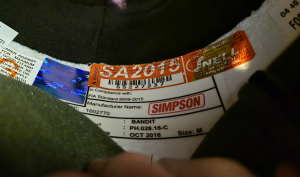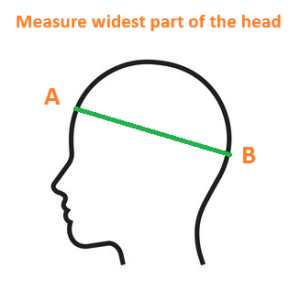FREE SHIPPING when you spend $500+
Below $500: Flat rate of $14.99 for shipping.
Track Your OrderNeed Help? Call Us: 918-512-1281
- FOR THE DRIVER
- FOR THE PIT/SHOP
- FOR THE CAR
- GEAR & MERCH
Free shipping when you spend $500+
FREE SHIPPING when you spend $500+
Below $500: Flat rate of $14.99 for shipping.
Free shipping when you spend $500+
When it comes to purchasing a helmet for auto racing or track days, we have many options and brands to choose from. But what really is the difference between a $249 helmet and a $751 helmet and a $1,999 helmet?
Some might ask, “if I need a helmet because my sanctioning body says I need one, why not just go with the $249 helmet and be done with it.”
In North America the major auto racing helmet brands are Bell, Simpson, G-Force, Arai and Stilo, with several niche manufacturers as well. Some of the more popular helmets sold are the Simpson Diamondback, Simpson Super Bandit, the Bell K1 Sport and the Stilo ST5 GT.
But what exactly do we get for our money?
We wear helmets in the car when on track to protect our “melon”, head, in case of impact. These helmets are tested and manufactured to some standard. In North America most racing sanctioning bodies recognize two safety organizations when it comes to racing helmets, these are Snell and the FIA.
Snell, or Snell Foundation, often just abbreviated as SA, is an independent, non-profit helmet standard and testing organization based in California.
SA ratings are valid for ten years and new Snell ratings are released every five years. For instance, if you have an SA2015 helmet, it will expire at the end of 2025. An SA2020 helmet will expire at the end of 2030. The Snell certification decals can be found inside the helmet under the lining. Check with your sanctioning body to understand their requirements.

Most American sanctioning bodies recognize Snell as the driving factor in determining which helmets are suitable for their events. The FIA homologation is another certification to consider and is typically what is accepted throughout much of Europe and the UK.
As of August 2024, FIA 8859-2015 and FIA 8860-2018 are the two FIA certifications to consider. If your helmet is 8859-2015 or 8860-2018 compliant it also meets the Snell 2015 and Snell 2020 certifications. However, a Snell 2015 or Snell 2020 helmet may not meet the FIA homologation. FIA is the more stringent of the two organizations.
From the consumer perspective what you get from an FIA 8860-2018 helmet typically is weight savings. You also get increased impact energy absorption, increased protection against sharp objects and also satisfies HANS/FHR requirements. This comes at a price though as these helmets typically start around the $3,000 price range and go up from there. For the competitive racer, this increased price point, weight savings and increased protection may be worth it.
Getting a proper fit is critical in selecting the correct helmet. If the helmet is too loose it won’t be able to perform its intended function, which is to protect you head in the event of a collision or impact. If it is too tight you’ll experience discomfort and will distract you from the task at hand.
To measure for your helmet you can use some tailors measuring tape or a string. (Tailors measuring tape is the soft, flexible measuring tape that tailors use to measure people for clothes and suits. It can be purchased at any arts and crafts store). String can work as well. To measure you want to measure the widest part of the head. This is usually from the top of the brow or top of forehead to the back of the skull.

To measure for your helmet:
If using string you can keep your finger at the point of measurement and lay the string next to a standard measuring tape. Make repeated measurements, changing the location of point A and point B slightly each time. You’re going to want the largest measurement, and you should get the same number more than once.
Using this measurement in inches or centimeters you can then use this value to select your helmet size. We have charts for the helmets we offer converting inches or centimeters to the manufactures helmet size.
Its best to actually try on the helmets prior to purchase. (We will work with you if you purchase a helmet from us and then when you get if find its not the correct size). You’ll want to leave the helmet on for several minutes. This will help you identify the fit of the helmet. You should feel even pressure all around your head. No pressure points where you experience pain or discomfort. Your cheeks should bunch up slightly with the chin straps fastened.
Put the helmet on, fasten chin straps like you are heading to the track. Reach behind your head and pull up slightly on the back of the helmet. If the helmet slides down over your eyes, then the helmet is too loose. However, if the helmet bunches up your forehead, then its a good fit.
After you’ve identified the proper size, next is actually choosing which helmet to purchase. you’ve worked with your sanctioning body to understand either the Snell or FIA requirements for the helmet, now its time to choose which one. Style, fit and price are the first considerations. Weight may be another consideration. The lighter the helmet the less fatigue you will experience on track, and you will lower the static weight of the vehicle and also lower the center of gravity of the vehicle. (Every lb. matters).
Carbon fiber helmets are growing in popularity both due to the weight savings they offer and that their price point has come down in recent years. If you do open-wheel racing carbon fiber helmets offer superior anti-abrasion properties compared to fiberglass helmets. Some people also just like the look of a carbon fiber helmet.
Some of the more popular and affordable carbon fiber helmets available today are the Stilo ST5 GT, Bell RS7 Carbon, Bell RS7C LTWT (extra lightweight version of the Bell RS7), and the Simpson Venator Carbon. G-Force also offers the REVO Carbon and is a very affordable option.
Style and price are others things to consider. Each brand tends to offer a unique overall style with comparable price points. Check our our selection of helmets from Simpson Racing Products, Bell Helmets, Arai, Stilo, and G-Force. G-Force tends to be the most affordable of the options listed. This also comes at a price. You don’t get some of the features offered in the other brands.
In addition to price and style there are other things to consider. Some brands offer replacement visors, and the air vents are more fully tested. You don’t want to be on track and experience a visor that is fogging up. Some also offer options for comm radio connections. A must if you are endurance racing! In our opinion the Stilo ST5 GT offers a superior comm radio system. If you open wheel race consider a helmet with a duckbill.
Now that you’ve purchased a helmet we want to care for it so it will last. If your helmet came with a helmet bag, use it. And keep the box. When at the track try to keep the helmet out of direct sunlight between sessions. Between sessions store your helmet in your truck, or enclosed trailer, in the box it came with to keep it away from direct sunlight. Allow it to airdry between sessions as well. A helmet dryer is a wise investment.
In the offseason try to store your in your home in a closet or spare room in the helmet bag and box it came with. Try to avoid storing it in a place where it will experience temperature extremes, such as in an unheated shop where it will see extreme cold in the winter and then extreme heat in the summer. This will tend to breakdown the adhesive that adheres the padding material to the shell. (Hand raised: Spoken from experience).
Even though your helmet has an expiration date you may want, or need to, replace it before that date. Even with proper care the padding material may begin to break away from the shell, or you may begin to experience bacteria in the padding material and it develops a smell. If the helmet is ever dropped from a distance of more than 12 inches it will need to be replaced. Racing helmets are designed to protect you from one impact … one.
Lastly … Be Safe, Go Fast and Have Fun!
***
Call To Grid was created to serve the grassroots racer! We offer only the most premier brands for the driver, car, and shop to help keep you safe, looking good and on the podium! We develop original content to help you and the car find speed! We know why you race; it’s the desire, discipline and determination required to do something well. It’s the camaraderie you experience at the track with people who share this passion of motorsports! Join us at Call to Grid to join the community of passionate drivers like yourself today!